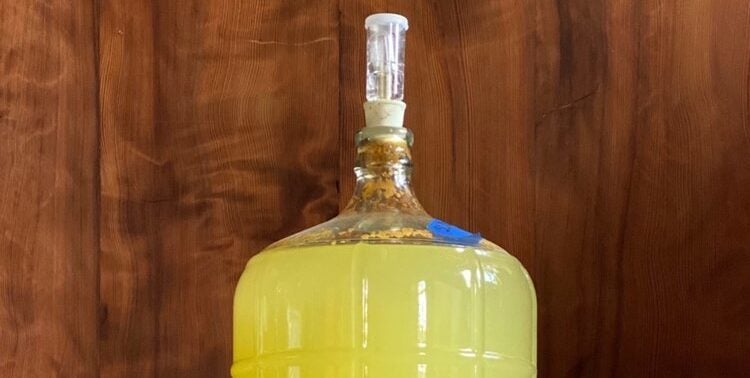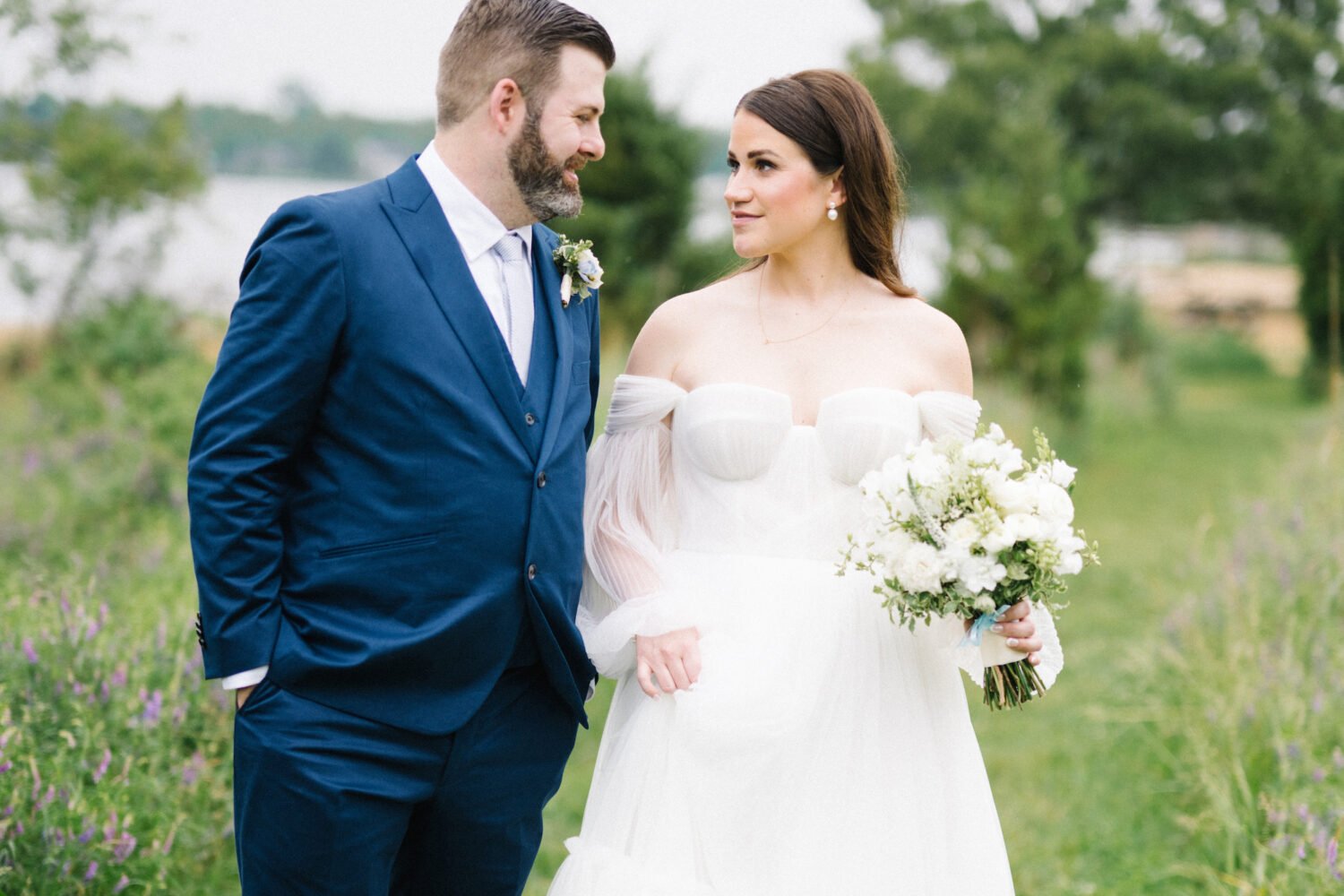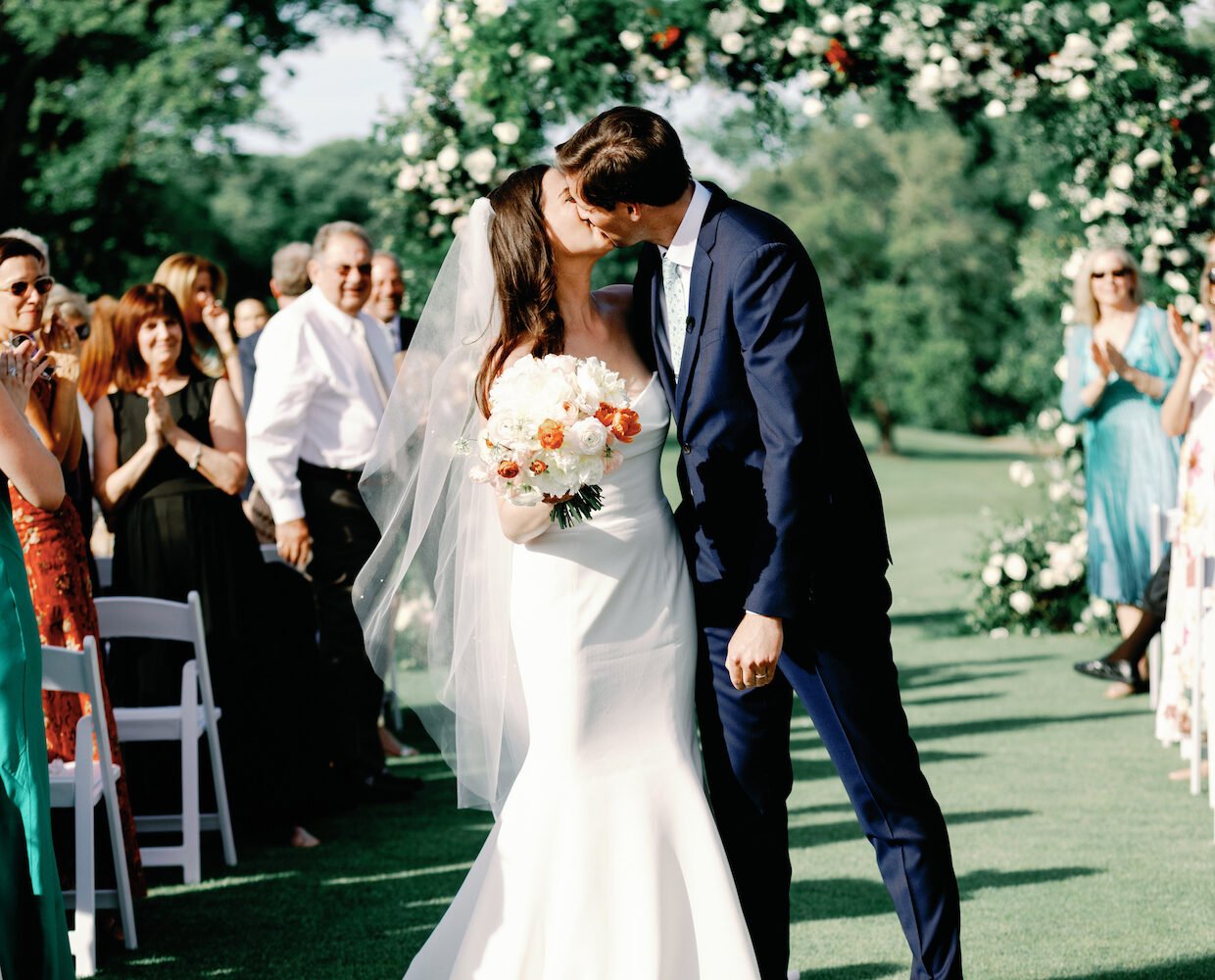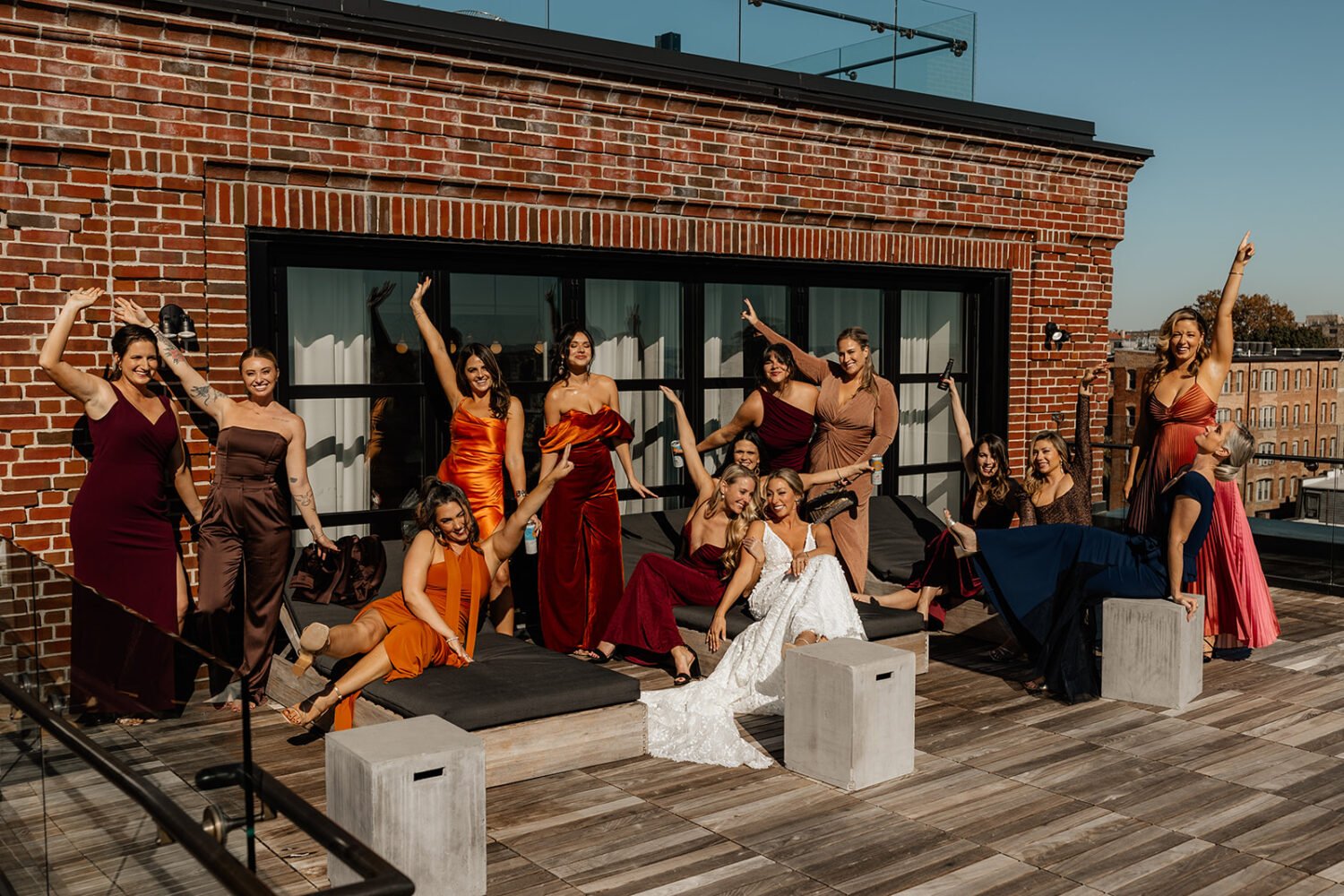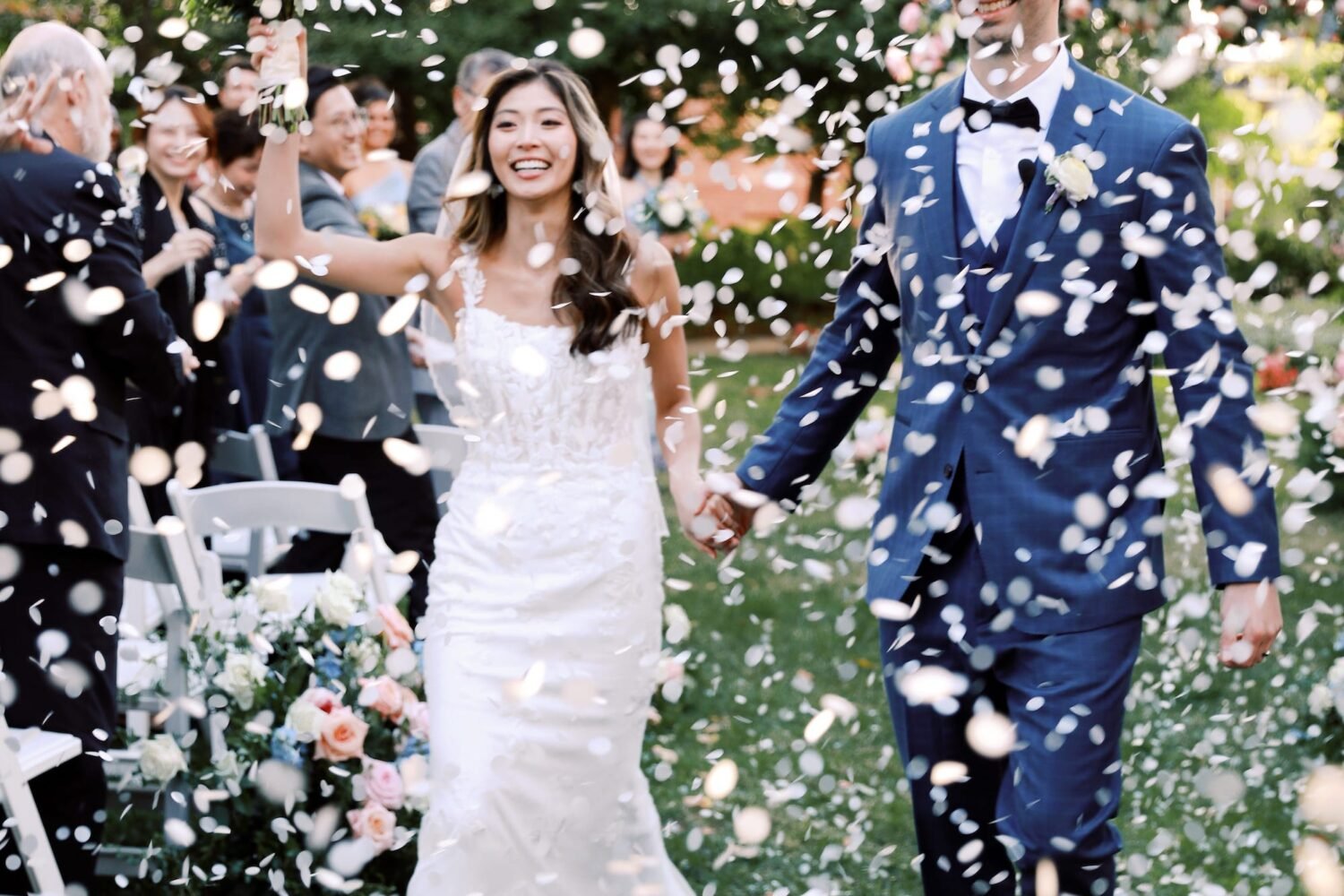Somewhere between hunching over 200 miniature plastic animals with a can of gold spray paint (my attempt at whimsical escort cards) and tracing the outlines of cowboy hats and Batman masks on foam core (props for my
photo booth), I had to ask myself: Was this all worth it?
The DIY bug had struck months earlier, not long after my fiancé popped the question. We’d settled on a date and a venue relatively painlessly, but soon it began to sink in just how easily nuptial costs add up. Weddings aren’t just expensive—they’re down-payment-on-a-house expensive.
Blogs bewitched me with cost-cutting tips and DIY tricks. Nix the florist and make your own bouquet, they told me. Forgo pricey decor in favor of handmade paper garlands, they said. I have two hands and a glue gun, I thought—why not give these do-it-yourself projects a whirl?
But now, woozy from the paint fumes, I wondered if those Pinterest-perfect weddings were nothing more than expertly crafted fantasies. How does this whole DIY wedding thing actually play out in real life? I turned to three been-there-done-that brides to find out.
THE FAVOR & FLOWER MAKER
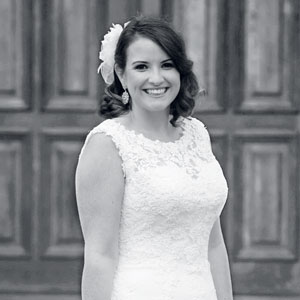
Megan Bailey, PR director for a restaurant group. Married in Chantilly, lives in Clarendon.
Megan and her groom, Liam, wanted to add some personal flair to their 150-person shindig [1] without driving themselves over the edge. “We did things that were easy for us to execute,” she says. “We didn’t try to learn a new skill. I feel like you have to stay within your comfort zone.”
Liam is a hot-sauce nerd—there are about a dozen of his favorites in the couple’s kitchen at any time—so the couple decided to make and bottle Sriracha-infused salt [2] as their wedding favor. “We found this really simple recipe on Pinterest,” Megan recalls. “All you do is roll salt around with Sriracha on a baking sheet and dehydrate it.” Liam’s mother helped them oven-bake the salt at a low temperature, then they packaged it prettily in jars for guests.
Without much of a floral budget, Megan opted to decorate her ceremony site with inexpensive blooms and repurpose them for her cocktail hour. She enlisted her bridesmaids to help spray-paint Mason jars a copper hue, fill them with cream-colored flowers from Whole Foods [3], then use ribbons to hang them from chair backs along the ceremony site’s center aisle. Later, the jars were moved to high-top tables where guests noshed on hors d’oeuvres.
“I kept everything simple, so I couldn’t screw it up,” Megan says. Her wallet-conscious thinking left enough wiggle room in the budget to hire a florist for the reception centerpieces.
[1] The bigger the wedding, the more time-consuming DIY gets. Think about your guest count before taking on a project.
[2] “Great idea for a food favor!” says event planner Aimee Dominick. “It won’t make people sick, and it can be done far
in advance.”
[3] Florist Shelly Bagdasian says freshness is key when buying from a grocery store. Blooms shouldn’t be fully open or have browning around the edges, and greenery shouldn’t look dried out.
Should You Try This at Home?
“Favors are a great place to DIY,” says Aimee Dominick of A. Dominick Events. “There’s not as much budget left over for them because they happen later in the process.” Be sure to choose a project that can be completed and stored several weeks ahead.
Flowers are trickier. A lot of hands-on work needs to happen day-of, and your wedding party might not be amenable to that. “They are there to support you but not necessarily work for you,” warns Dominick. How much you have to transform the plants you purchase determines how “easy” they are to DIY—Dominick suggests pre-potted plants to save time (and everyone’s sanity).
Shelly Bagdasian of B Floral Event Design says to consider your wedding album when deciding where to use homemade arrangements. “The ceremony is a highly photographed area,” says Bagdasian, and crucial elements like decorated arches are best left to professionals. “DIY something like the place-card table or the gift table instead.”
THE CONNECTION MAKER
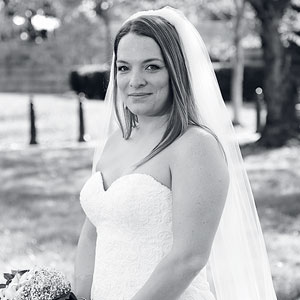
Jackie Ludden Nardelli, PR professional. Married in DC, lives on Capitol Hill.
Jackie had witnessed her fair share of friends get hitched, and she wanted her own 320-person affair to stand out. “I wanted stuff that was totally outside the box that no one had ever seen before,” she says. Luckily, the PR pro has deep ties within the hospitality community, not to mention some helpful family connections. Why not make use of them?
First on her DIY list: the wedding-day look. Jackie’s father, a former professional ballet dancer who once sewed tutus in the Kennedy Center costume shop, created the bride’s flowing, lace-trimmed veil [4]. Next, Jackie addressed her sweet tooth with aid from her groom’s mother, a prolific baker who spent months baking and freezing 2,000 cookies [5] to serve as dessert and take-home gifts. She turned to her cousin Travis [6]—a local rapper who goes by the stage name Cane—to kick off the reception with an original composition for the wedding-party entrance.
Jackie’s biggest DIY triumph may have been her decision to forgo a traditional caterer. Her hospitality-industry friends offered their services at a discount, including chef Victor Albisu, who sent staffers to man a station serving food from his restaurants Del Campo and Taco Bamba. Others followed suit, including friends from The Source, Beuchert’s Saloon, Kapnos, City Tap House, and Blue 44. Cocktail savant Gina Chersevani designed signature libations for the evening, and Samuel Adams Brewery supplied the beer. (Jackie’s groom, Mick, is a lobbyist who represents the interests of craft breweries.)
“We’re paying for the wedding, but the generosity of our friends is making the whole thing possible,” Jackie said before the big day. “We’re so excited and so grateful.”
[1] Exactly what DIY should be, says Dominick. Rich in personal history and able to be completed well in advance.
[2] On big projects like this, setting expectations ahead of time is important. Be sure volunteers know what they’re getting into, check in with them regularly, and have a backup plan in mind.
[3] Enlisting a friend or relative for one performance is a fun surprise, says Dominick. And if they fall through, it doesn’t ruin the night’s entertainment.
Should You Try This at Home?
Food may be the most labor-intensive part of any celebration, so it makes sense that Jackie’s “DIY” approach involved many seasoned professionals. If your catering connections run deep, Dominick suggests designating a point person to ensure a cohesive vision for the event and to oversee communication among participants. Are the menus balanced? Are there options for vegetarians and those with food allergies? These are some of the menu questions to consider.
Another important part of food service: support staff. Restaurants may not automatically send bussers and trash cans, so hire a separate cleanup crew if needed.
THE TOTAL DIY-ER
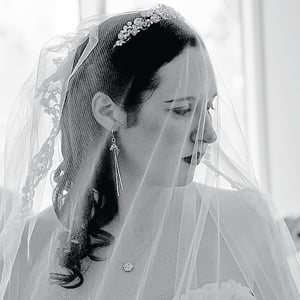
Leah Wenck, stay-at-home mom. Married in Laytonsville, lives in Baltimore.
Whimsy-loving Leah didn’t have party-industry connections, but that didn’t stop her from turning her rustic outdoor wedding into a massive Midsummer Night’s Dream–themed DIY project. “I wanted it my way,” she says. “Why would I pay all this money for it not to be as good as I want it to be?”
Leah rented a tent and hired a caterer and photographer [7]; most of the rest she did herself. She made centerpieces using the “oldest, prettiest-looking books” she could find in secondhand stores, and lined the tables with empty wine bottles filled with wildflowers from a local florist [8]. In place of traditional escort cards, Leah pressed rose petals—a trick she learned as an environmental science major at the University of Maryland, Baltimore County—and inscribed them with guests’ table assignments in gold ink. She also enlisted her bridesmaids to help assemble
everything the day of the wedding.
Other aspects of the wedding were DIY, too: “We married at my aunt’s farm, so I didn’t actually book a location. My brother’s band was the wedding band [9]. My mom made the ketubah”—a Jewish marriage contract—“and my mother-in-law made the cake.”
Leah still brightens at the memory of her undertaking, but admits that some projects required more work than anticipated. Some of the rose petals crumbled when dried, and writing on them wasn’t easy. “The petals had a natural film and were very delicate [10],” she remembers. “It was like trying to write on a butterfly’s wing.”
Another complication: Leah planned the wedding from Colorado, where she was completing a master’s degree in architecture. She did nearly all of her DIY projects in Denver, then packed everything up and drove 25 hours to her Maryland venue.
“Being a long-distance bride was really tough,” she admits.
Still, she would do it all again in a heartbeat. “I wanted it to be magical and mystical looking, and I didn’t feel anyone else could do that.” Apart from the DIY savings—Leah estimates she cut costs by $2,000—she says the biggest perk was creating something all her own. “I was proud of myself,” she says.
[1] Having a few professionals on hand will help with day-of troubleshooting.
[2] Prepare to be flexible based on which wildflowers are in season.
[3] If your band doesn’t usually play weddings, be sure they have a music plan for when they take breaks.
[4] Using Mod Podge to seal the petals first may have made them easier to write on, suggests calligrapher Michele Hatty Fritz.
Should You Try This at Home?
Hand-writing is a prime opportunity to personalize your wedding decor—provided you plan ahead.
“Set yourself up to win,” says calligrapher Michele Hatty Fritz. Take a calligraphy class, leave yourself time to test (and revise) your project, and have on hand 20 percent more materials than you need. “If you mess up, you can grab another one. You won’t find yourself panicking that way.”
When it comes to a DIY venue, do your homework before choosing a private home.
“There are a lot of unsexy things to think about that are really important,” says Dominick. “Is the house on a septic system? Will you have to bring in extra bathrooms? What about parking? Can the house support your electrical needs?” Hire a planner to help you ask the right questions, especially if you’re planning from out of state.
Bear in mind your own ability to multitask. “Your wedding ceremony and reception go by in a blink,” says Bagdasian. “If you leave the stress of set-up to professionals, you’ll enjoy your wedding so much more.”










